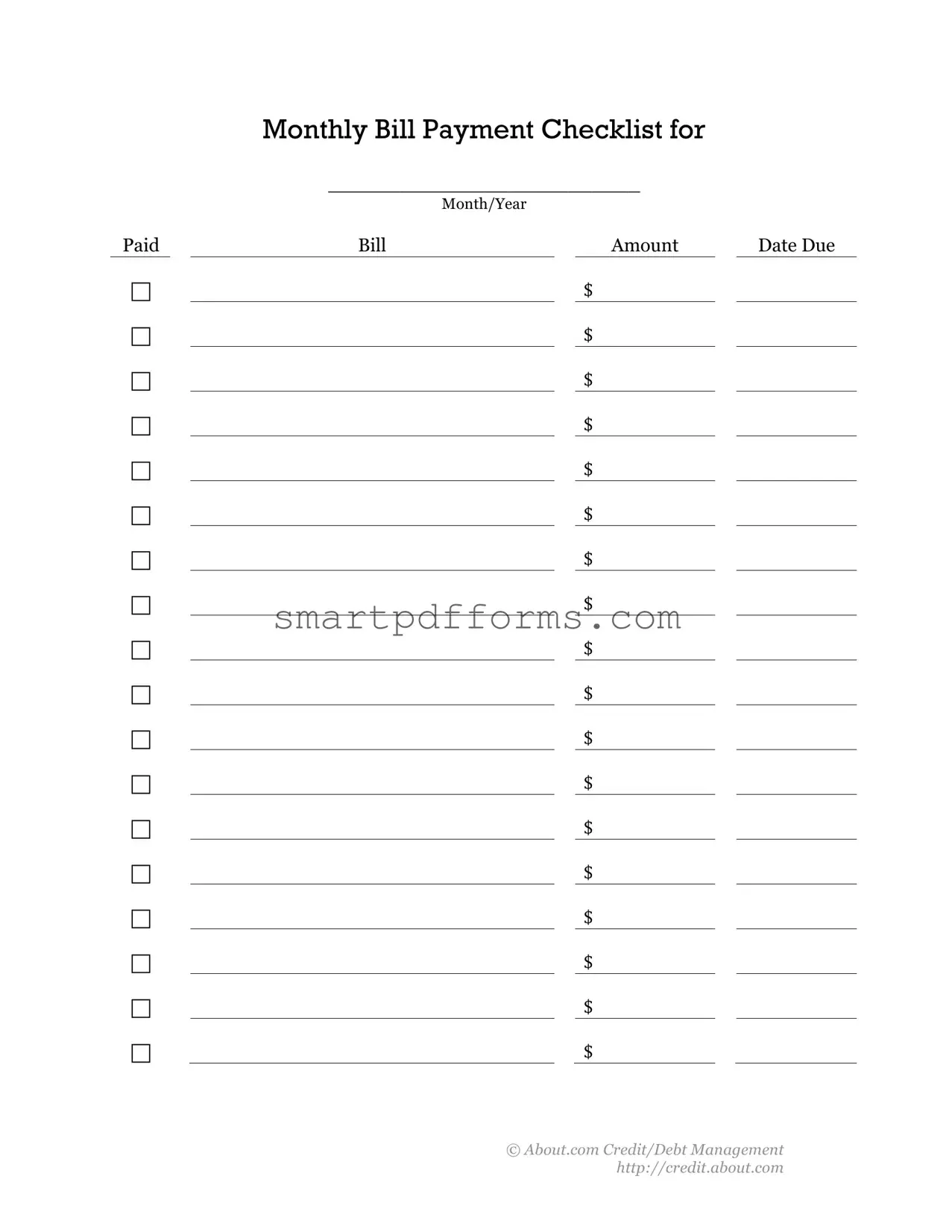Managing monthly finances can often feel like navigating a labyrinth, especially when trying to keep track of due dates, amounts, and ensuring everything is paid on time to avoid late fees or negative impacts on one's credit score. Enter the Bill Payment Checklist, a simple yet profoundly effective tool designed to bring order to chaos. Designed with spaces to list down each bill, the amount due, and its corresponding due date alongside a convenient checkbox to mark once paid, this form provides a visual snapshot of one's monthly financial obligations. Predated boxes encourage prompt payment pacing, making it easier for individuals to manage their finances efficiently. Originating from a credit and debt management perspective, clearly, the goal here is not only organization but also financial responsibility. Whether printed for a physical binder or used digitally, the adaptability of this form to different users' needs highlights its practicality in everyday financial management. As a straightforward guide from About.com Credit/Debt Management, its utility is enhanced by its accessibility, available for anyone seeking to impose a sense of order on their bill payment processes.

